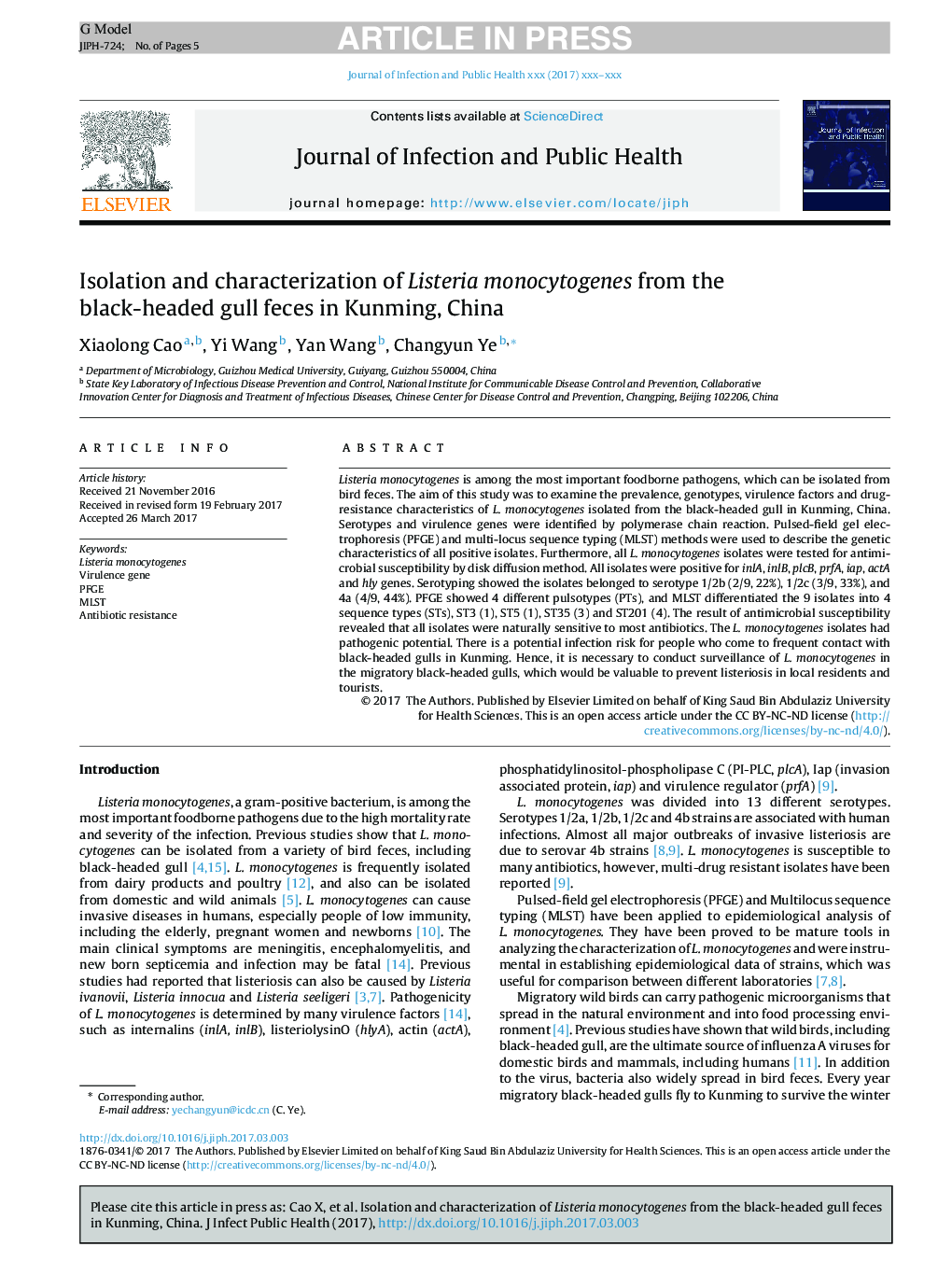| Article ID | Journal | Published Year | Pages | File Type |
|---|---|---|---|---|
| 8746855 | Journal of Infection and Public Health | 2018 | 5 Pages |
Abstract
Listeria monocytogenes is among the most important foodborne pathogens, which can be isolated from bird feces. The aim of this study was to examine the prevalence, genotypes, virulence factors and drug-resistance characteristics of L. monocytogenes isolated from the black-headed gull in Kunming, China. Serotypes and virulence genes were identified by polymerase chain reaction. Pulsed-field gel electrophoresis (PFGE) and multi-locus sequence typing (MLST) methods were used to describe the genetic characteristics of all positive isolates. Furthermore, all L. monocytogenes isolates were tested for antimicrobial susceptibility by disk diffusion method. All isolates were positive for inlA, inlB, plcB, prfA, iap, actA and hly genes. Serotyping showed the isolates belonged to serotype 1/2b (2/9, 22%), 1/2c (3/9, 33%), and 4a (4/9, 44%). PFGE showed 4 different pulsotypes (PTs), and MLST differentiated the 9 isolates into 4 sequence types (STs), ST3 (1), ST5 (1), ST35 (3) and ST201 (4). The result of antimicrobial susceptibility revealed that all isolates were naturally sensitive to most antibiotics. The L. monocytogenes isolates had pathogenic potential. There is a potential infection risk for people who come to frequent contact with black-headed gulls in Kunming. Hence, it is necessary to conduct surveillance of L. monocytogenes in the migratory black-headed gulls, which would be valuable to prevent listeriosis in local residents and tourists.
Related Topics
Health Sciences
Medicine and Dentistry
Infectious Diseases
Authors
Xiaolong Cao, Yi Wang, Yan Wang, Changyun Ye,
